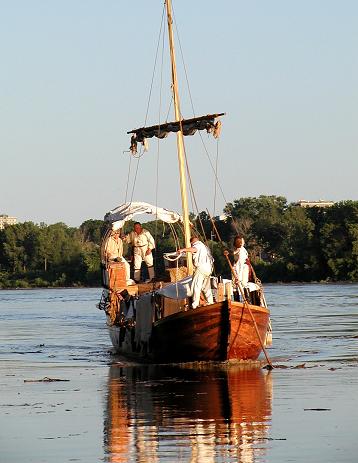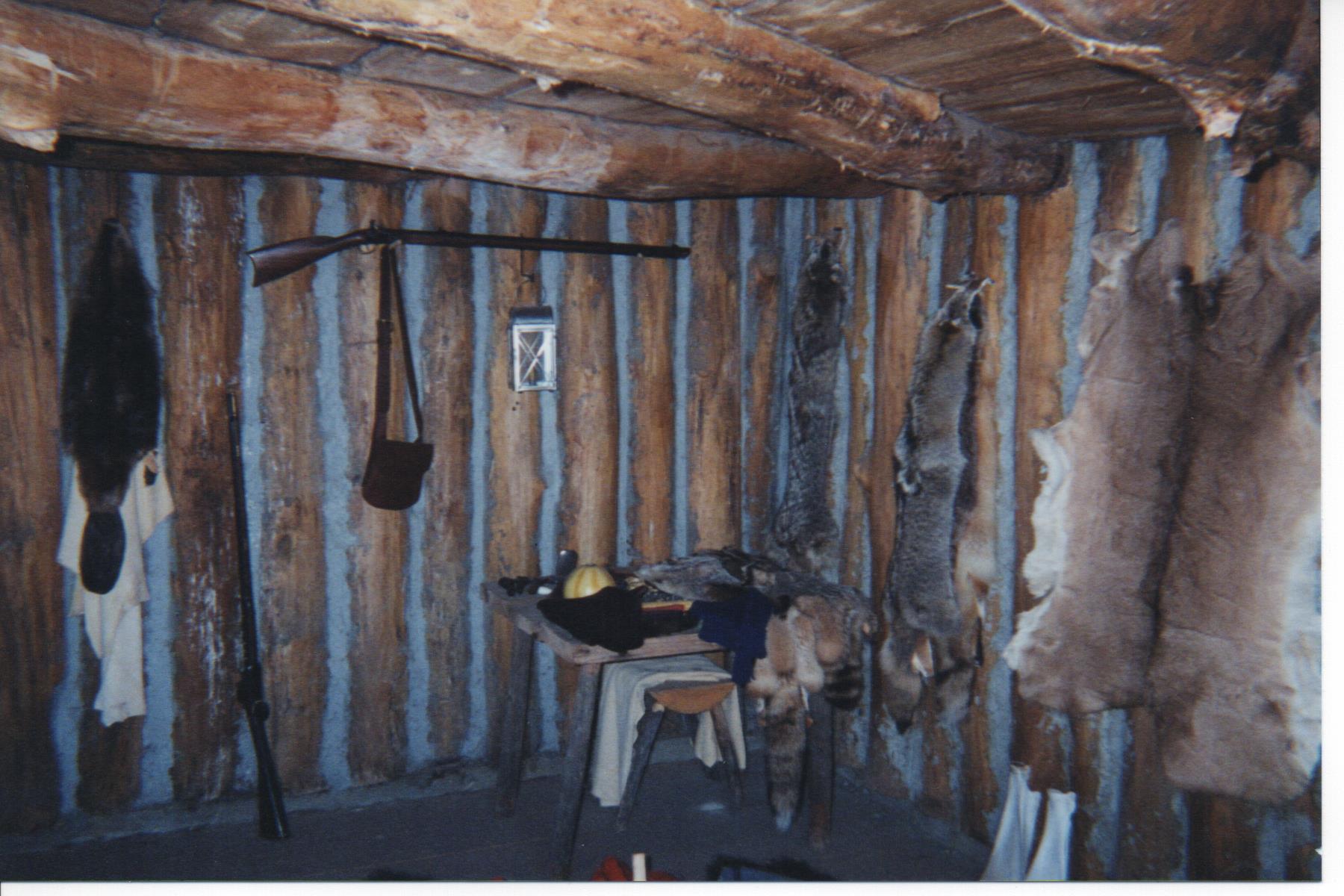|
|

|

|

|

|
Drouillard Continued ...
From that post Drouillard escorted eight prospective members of the
Corps of Discovery
drawn from Captain John Campbell's company of
the 2nd U.S. Infantry Regiment. Drouillard delivered them at
Camp Dubois, the Corps 1803-04 winter quarters, on December 22,
1803. The officers dismissed four of the eight. Corporal Richard
Warfington and privates Hugh Hall, Thomas Howard, and John Potts
joined the Expedition

Drouillard served as a messenger and
hunter at Camp Dubois and helped the officers select the French
boatmen
who were needed to get the keelboat and two pirogues up
the Missouri in 1804. Once the Expedition was finally
underway in May 1804, Drouillard soon established himself as
the Expedition's premiere hunter and scout. His wilderness
skills underwent their first severe trial when he was out
hunting with Private John Shields, another woodsman of rare
skill. A week of heavy rains had turned creeks into rivers.
For seven days the two men built one makeshift raft after
another as they waded and poled themselves through a soggy
landscape to catch up with the Expedition.

It wasn't until early August that
Drouillard's sign language skills were needed when the Corps
contacted their first Indian nation, the Otoes.
at about the same time Drouillard was also among the men
sent to capture the two deserters, Moses Reed and La Liberte.
During the 1804-05 winter among the Mandans in North Dakota,
Drouillard was one of the busiest men in the Corps, between
hunting and interpretation among the several tribes who were
in the area.

There's probably not a hunter in the
world who has not wished himself a member of the Expedition
in the spring and summer of 1805 as it moved slowly up the Missouri in
Montana. It didn't take a George Drouillard to kill meat then, and it came in
many forms. On April 12th Drouillard shot a beaver that was swimming in the
river during the day. Rather unimpressive as far as hunting goes, but of great
interest to trappers, according to Lewis. Beaver aren't out during the day when
they're being trapped or hunted. Three weeks later Drouillard shot one of the
first grizzlies, three weeks later a bighorn sheep.
Twice that spring Drouillard baled
Toussaint Charbonneau out of a jam.
On April 13th he righted the pirogue that almost capsized when
Charbonneau failed to remember what the tiller was for. On June 2nd, he
shot a bear that was after Sacajawea's husband, who shot his gun in the
air and scampered into the bushes. Drouillard shot true, depriving
Charbonneau of the opportunity to adequately test his approach.
Perhaps Drouillard's most single
important interpretive job was performed in the Lemhi valley from
August 13th to 15th.
He was a member of the advance party who met the Shoshones. Through
Drouillard, Cameahwait informed Lewis that the Salmon River was not
navigable and described for him the land routes that led to the west
through the mountains of central Idaho. In return, Lewis was able to
convince Cameahwait to help the Expedition cross Lemhi Pass. In his
August 14th journal entry Lewis praised Drouillard's skills: "[He] . . .
understood perfectly the common language of gesticulation or signs which
seems to be universally understood by all the Nations we have yet seen."
Lewis and Drouillard together found the words and gestures that won the
trust of Cameahwait and his people. If they had failed, the Expedition
may have been over
In August 1805 Captain Meriwether Lewis and interpreter George
Drouillard convinced the Lemhi Shoshone to help the Corps of
Discovery
portage the continental divide at Lemhi Pass. Drouillard remained with
Lewis and the larger portion of the Corps at the forks of the Beaverhead
River while Clark and his detachment scouted the Salmon River. Here at the
headwaters of the Missouri game was much scarcer than it had been on the
plains. Lewis needed his best hunter.
Drouillard was perhaps the only member of the Corps to have an
unpleasant encounter with the Lemhi Shoshone (August 22, 1805).
Drouillard was hunting in Shoshone Cove [Horse Prairie] when he came upon
a small Indian camp. There were three women and three men. Drouillard
dismounted and sat down to visit in sign language. Soon the Indians decided
to leave and Drouillard went to get his horse, leaving his rifle in the
camp. The temptation was too great. A Lemhi man grabbed the gun and they all
jumped on their horses and galloped away. Drouillard had pursued them for
ten miles when their horses began to tire and was able to wrestle his rifle
away from the man who had stolen it. He returned to the Shoshone camp and
took everything he could carry away, including several elk skins, several
grass bags of dried berries and roots, and some pieces of obsidian.
The most famous Indian conflict of the Expedition.
This little known episode foreshadowed the most famous Indian conflict of
the Expedition. This was the fight with the Blackfeet near the Marias River
on July 27, 1806. For a second time Drouillard foolishly left his rifle
where an Indian could grab it. Drouillard saw him take it and shouted, ?Damn
you, let go my gun.? The shout wakened Lewis, but probably was not
understood by the would-be robber. Drouillard was very quick and in a
instant was on the Indian and wrestling him for the gun. He needed both
hands in the tussle and was thus not able to say, ?Damn you, let go my gun?
in sign language. Drouillard got his rifle, but Lewis would not give him
permission to shoot the Indian.
Drouillard's final mission for the Corps was the delivery to the post
office at Cahokia, Illinois of the first letters written by the officers
to President Jefferson.
He also purchased from privates Whitehouse and Collins the rights to the
future land warrants they would receive from the government as additional
compensation for their service on the Expedition. A year later he sold the
warrants at a handsome profit and was named by two of Manuel Lisa's fur
company partners as their field representative.
The spring of 1807 found Drouillard and his former Corps colleagues
John Potts and Peter Weiser headed up the Missouri with Lisa's first
expedition.
In an odd reprisal of his recovery of deserter Moses Reed in 1804,
Drouillard tracked another deserter and killed him when the man refused to
return to the party. He was eventually tried for murder and acquitted.
During the winter of 1807-08 Drouillard traveled through the land of the
Crow Indians in the Big Horn Mountains. When he returned to St. Louis, his
knowledge of the area was added to Clark's map of the West.
In 1809 Drouillard returned to the mountains as an employee of the
Missouri Fur Company, whose partners included Lisa, Thomas James and
Andrew Henry.
James was a member of the party who ventured into the headwaters of the
Missouri and ran afoul of the Blackfeet and Gros Ventre. And it was James
who described what they found when George Drouillard failed to return one
day from checking his beaver traps: "Druyer [sic] and his horse lay dead,
the former mangled in a horrible manner; his head was cut off, his entrails
torn out, and his body hacked to pieces. We saw from the marks on the ground
that he must have fought in a circle on horseback, and probably killed some
of his enemies, being a brave man, and well armed with a rifle, pistol,
knife and tomahawk."
The bloody pieces of what had been George Drouillard were hastily buried
in an unmarked grave.
|
|
|